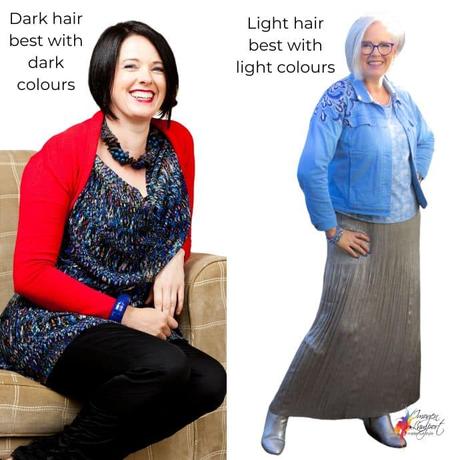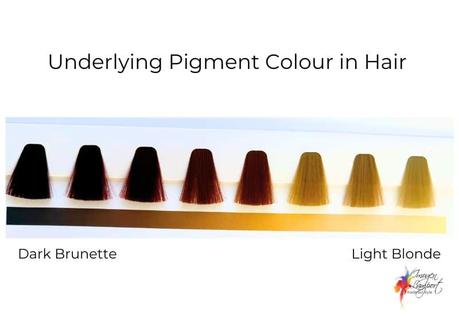



Do you struggle to figure out your best colours and how to wear them?
I received this question from a lovely read – “The thing I struggle with is that I have neutral cool olive skin with some depth, some softness and some brightness and lightness which makes it really confusing as I feel like I can almost pull off any colour season. I find that bright colours make me look healthy but kind of overwhelm me, but other colours can look a bit dull on me, I seem to suit cool and bright colours yet my hair goes warm in the sun and I tan easily but extremely warm colours clash with my colouring. True summer looks good on me but still it can look a bit plain like I’m missing something. There’s also so many sub-seasons and different colour systems that it gets really confusing”
&iv;&modestbranding;&rel;&autohide;&playsinline;&autoplay;
Understanding Personal Colour Analysis
Colour analysis ideally takes the three properties of colour: Intensity/Saturation (how bright or muted a colour is), Value (how light or dark a colour is) and Undertone (how warm or cool a colour is) into consideration.
These are all spectrums – and most of the seasonal systems don’t have enough variation in intensity or undertone (as in not all warm colours are really warm and not all cool colours are really cool – some are more in between – aka – just a little warm or just a little cool). This is why it can be confusing to find your palette and why a professional colour analysis using a more advanced colour system (such as my Absolute Colour System with 18 different colour palettes) is so valuable. This is because a more nuanced system takes into account a wider variety of skin tones and colouring.
The quality of your analysis is only as good as the system that is being used and the consultant’s training. Sadly there are many poorly trained colour consultants giving poor colour analysis advice (and don’t get me started on the AI versions which do a truly terrible job most of the time). Your colour consultant needs to understand not only how to find your best palette, but also how to advise you on ideal value (the overall depth of colours that suit and you should wear in your outfits – read up about that here). Along with your colour contrast and value contrast – which are two invaluable tools in figuring out how to put your outfit colours together in a way that creates harmony and balance with you making you the star (rather than the outfit overwhelming you).
Colour Intensity or Saturation
Colours that are too bright for you will overwhelm you and create a body focus, pulling attention from your face and to your body.
Colours that are too muted or dull for you can drain you of life and feel drab.
The right intensity will make you shine and look your best. You want to use a colour analysis system that has a greater variety of intensity options as this gives you the ability to curate a cohesive wardrobe of colours that blend together so you can create more outfits from fewer clothes and the colours you wear will make you look alive and vibrant, yet with that face focus (which is what you want).
Colour Value – Lightness to Darkness
Your ideal value relates to how light or dark your hair is and is an important aspect of personal colour analysis and choosing your best palette. 
Contrast – Colour and Value
Plus when putting outfits together you need to know your value and colour contrasts – because these are the things that help you put your outfits together using your colours – which is why you may have garments in your colour palette that don’t look as great as you think they should. They may be in the wrong value or colour contrast for you, or not your ideal value.
To figure out your colour and value contrast check out my post here.
You can see in the image above, that when I had dark hair and fair skin I looked better in a higher-value contrast – both dark and light elements in the one outfit. Now that I have light hair and a medium value contrast wearing light with medium instead of light with dark.
Does a Tan Affect Your Colour Palette?
The answer is usually a resounding NO. This is because there are two sorts of melanin – a cool one and a warm one – so whichever your undertone you’ll have that version of melanin and will tan either cool or warm so it doesn’t impact your undertone. What a tan does impact is your colour contrast and value contrast. So you may find in the summer when you have a tan your colour contrast goes up and you need to wear more colours (rather than neutrals), but maybe your value contrast becomes smaller. This is something I talk to my clients about in a colour analysis if they tan a lot in summer.
Summer Sun and Your Hair Colour
The sun bleaches your hair and exposes the underlying pigments. This is why someone with cool skin may end up with warm hair over time, as the sun has exposed the yellow or orange pigments that lie beneath their hair pigment.
The underlying pigment in hair is dependent on natural hair colour, light blondes have yellow pigments, dark blondes have yellow-orange pigment, light brunettes have orange pigments and dark brunettes have orange-red pigments, with really dark brown hair a red pigment.
This is why blonde hair often goes “brassy” because as the dye fades and the underlying pigments are exposed again the warmth of those pigments dominates. This is why if you have blonde hair, use a “blonde” or “silver” shampoo and conditioner (which is purple – the complementary colour to yellow which neutralises that brassiness), and if you are a brunette use a “brunette” or blue shampoo and conditioner (orange is complementary to blue so the blue tones neutralise the orange pigments and keep your hair cool).
Not only can the sun expose those underlying warm pigments, so can heat styling tools and even the chlorine in the water (and particularly in swimming pools), along with hair dye that contains a bleaching agent (even if you’re dying your hair darker, the dye strips your original pigment then lays down colour, over the exposed underlying pigment).
There is a Palette For Everyone
Nobody looks great in every single colour, you really do need the right undertone, intensity and value to truly shine and look your best. Sure with enough makeup and fake tan you can make a colour look OK, but ideally you want to be wearing colours that don’t require you to wear lots of makeup and any fake tan. Your best colours will smooth out your skin and negate wrinkles and make you look healthy and vibrant. These colours change with age and any time you decide to make a radical hair colour change (even if it’s just getting highlights to hide the greys in your brown hair) that’s a great indication that a colour analysis update is due.
Inside my 7 Steps to Style program, I go into depth about all these aspects of wearing your colours so that you can make the best choices.
Getting an education in colour and style makes your approach to fashion sustainable, as you’re no longer wasting money on all the wrong clothes. Instead, you’re making conscious, discerning choices that are good for you and our planet.
Get an online personal colour analysis here.
Personal Colour Analysis: The Hot New Old Trend
Busted! 7 Myths About Personal Colour Analysis Holding You Back From Your Perfect Palette
Why Colour Analysis has Evolved Beyond the Seasons






